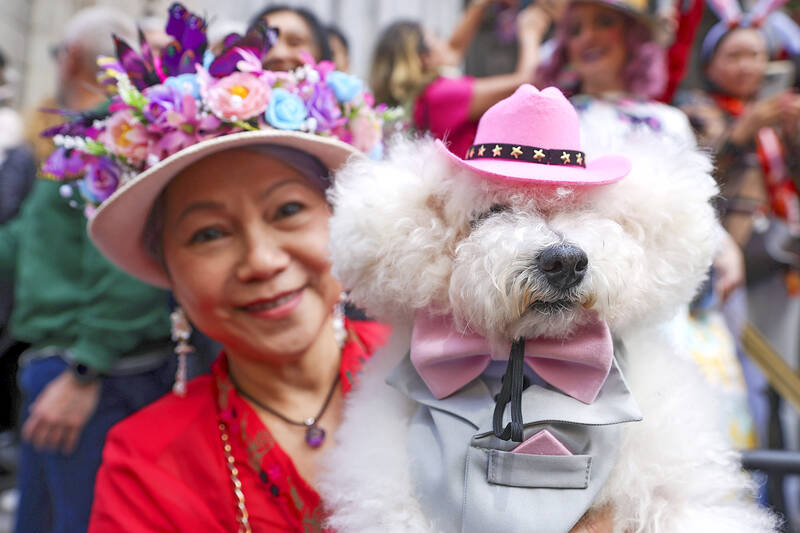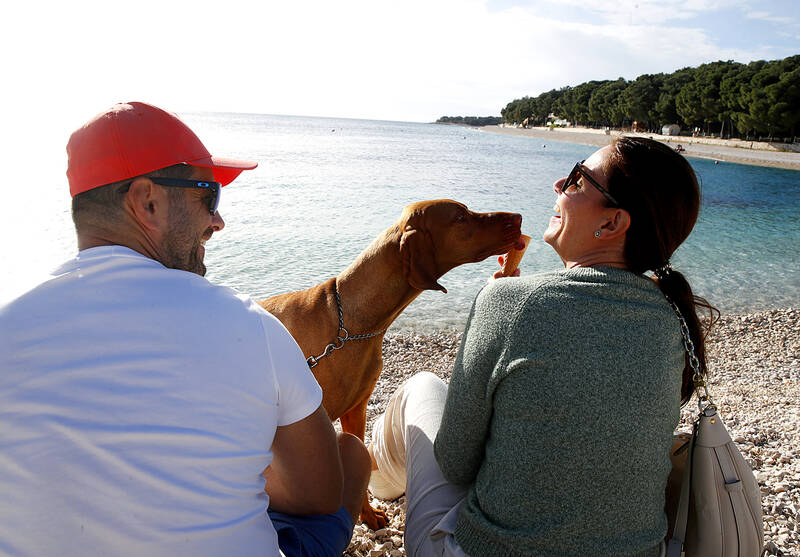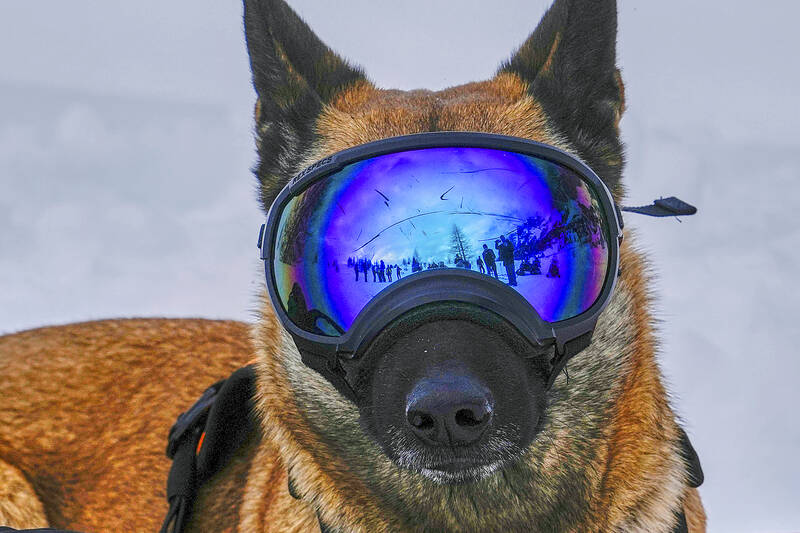Dogs are not simply “fur babies” or best friend but a blend of both, researchers have found in a study they say highlights the special status of pets.
The study suggests owners rate their relationship with their dogs as being as satisfying or more satisfying than their closest human relationships. However, the researchers did not find the owner-dog bond was stronger in people with weaker human relationships.
“Our results showed that it [the bond] does not replace human relationships but offers something different, a unique combination of characteristics to complement what we receive from the human side of our social network,” said Borbala Turcsan, first author of the study from Eotvos Lorand University in Hungary.

Photo: EPA-EFE
Writing in the journal Scientific Reports, the team described how they used social media to recruit 717 dog owners over two periods, from April 2011 to February 2013, and from January 2022 to December 2023. About 20 percent of participants had children and about 80 percent had a romantic partner.
They were asked to rate their relationship with a pet, child, romantic partner, closest relative and best friend on 13 characteristics including companionship, intimacy, reliability, satisfaction and power balance.
Participants were asked how often they protected and looked out for the individual, spent fun time with them, argued and found the individual got on their nerves, as well as how sure they were the relationship would last and who was more dominant.

Photo: EPA-EFE
The team found owners rated their dogs higher for companionship and needing nurture than their closest relative, best friend and romantic partner, while they experienced fewer negative interactions with their dog than with their child, romantic partner or closest relative.
Owners also rated their dogs higher than their best friends and closest relatives for areas including affection, reliability and support. However, when it came to intimacy, romantic partners trumped canines.
And they reported greater relationship satisfaction with their dogs than with their closest kin or best friend. There was little difference in satisfaction when the bond was judged against one with a romantic partner or child.

Photo: AP
But when it came to power, owners’ relationships with their dogs showed the greatest imbalances. The researchers noted that while children were raised to become independent adults, dogs required ongoing guidance and supervision.
“Dogs offer a highly positive relationship with minimal conflict, strong social support, and the unique opportunity to have full control over another living being’s life,” said Prof Eniko Kubinyi, senior author of the research.
Turcsan added that while the dog-owner relationship was most similar to that between a child and a parent, a crucial feature — aside from the power asymmetry — was that dogs had much lower levels of antagonism and conflict with their owners compared to children, something the team noted was similar to best friendships.
While the study has limitations, including that participants were self-selecting, the researchers said the findings highlighted the flexibility of the roles dogs played.
“A dog can be a playmate for children, a good flatmate, best friend for young singles, a surrogate child for young couples, a sibling figure once children arrive, a grandchild for “empty-nester” parents, and perhaps the most important source of social support for elderly people living alone,” said Kubinyi.
Turcsan agreed: “Dogs can be (almost) anything we want them to be.”

In the March 9 edition of the Taipei Times a piece by Ninon Godefroy ran with the headine “The quiet, gentle rhythm of Taiwan.” It started with the line “Taiwan is a small, humble place. There is no Eiffel Tower, no pyramids — no singular attraction that draws the world’s attention.” I laughed out loud at that. This was out of no disrespect for the author or the piece, which made some interesting analogies and good points about how both Din Tai Fung’s and Taiwan Semiconductor Manufacturing Co’s (TSMC, 台積電) meticulous attention to detail and quality are not quite up to

April 21 to April 27 Hsieh Er’s (謝娥) political fortunes were rising fast after she got out of jail and joined the Chinese Nationalist Party (KMT) in December 1945. Not only did she hold key positions in various committees, she was elected the only woman on the Taipei City Council and headed to Nanjing in 1946 as the sole Taiwanese female representative to the National Constituent Assembly. With the support of first lady Soong May-ling (宋美齡), she started the Taipei Women’s Association and Taiwan Provincial Women’s Association, where she

It is one of the more remarkable facts of Taiwan history that it was never occupied or claimed by any of the numerous kingdoms of southern China — Han or otherwise — that lay just across the water from it. None of their brilliant ministers ever discovered that Taiwan was a “core interest” of the state whose annexation was “inevitable.” As Paul Kua notes in an excellent monograph laying out how the Portuguese gave Taiwan the name “Formosa,” the first Europeans to express an interest in occupying Taiwan were the Spanish. Tonio Andrade in his seminal work, How Taiwan Became Chinese,

Mongolian influencer Anudari Daarya looks effortlessly glamorous and carefree in her social media posts — but the classically trained pianist’s road to acceptance as a transgender artist has been anything but easy. She is one of a growing number of Mongolian LGBTQ youth challenging stereotypes and fighting for acceptance through media representation in the socially conservative country. LGBTQ Mongolians often hide their identities from their employers and colleagues for fear of discrimination, with a survey by the non-profit LGBT Centre Mongolia showing that only 20 percent of people felt comfortable coming out at work. Daarya, 25, said she has faced discrimination since she